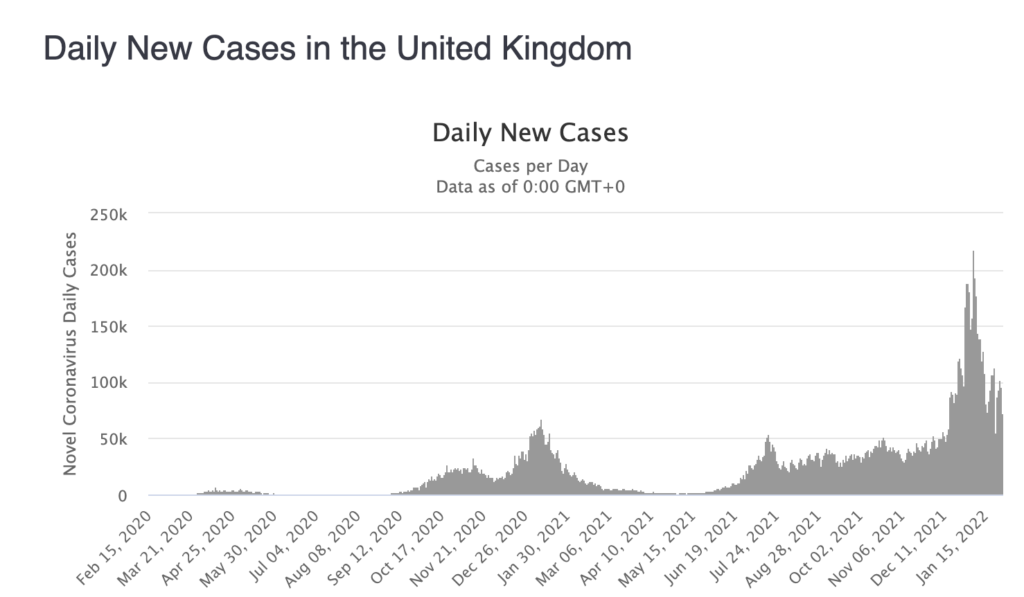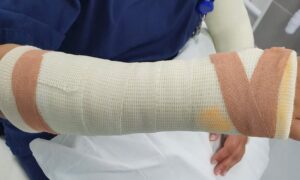Luxembourg
As of mid-February, Luxembourg is loosening rules including ending 11 p.m. curfew rules for restaurants and bars.
Beginning 15 January, Luxembourg started restricting public access to the unvaccinated. Companies require proof of vaccination, recovery or a negative PCR tests. You can see more details here.
However, as of mid-February, the CovidCheck system requiring workers to show proof of a negative test, vaccination or recent recovery from the virus in order to enter – is no longer compulsory for entry to companies in the private sector, although some companies are keeping the checks in place.

Netherlands
Media reports state that most pandemic restrictions will be dropped as of 18 February including masks in stores and social distancing. This would never have happened a year ago. The Netherlands is relaxing pandemic restrictions just after the country recorded historic peaks in COVID-19 infections, reaching almost 190,000 on 8 February.
But since then, new daily infections have dropped to about 60,000.
The return to normal has been under way for a few weeks. Prime Minister Mark Rutte announced on 25 January that non-essential stores, theaters, cafés and restaurants can reopen immediately. But they’ll all had to close no later than 10 p.m. Now they don’t. More surprisingly, the end of pandemic rules started independent of the federal government when city councils and mayors started saying, “Genug … no more lockdowns” and refused to enforce bans on clubs, restaurants and cafés opening.
UnHerd has the best (funniest) look at the Netherlands’ quirky lockdown, which left open gyms and brothels but closed the outdoor seating at cafés.
Dutch officials have said the 5 December lockdown was meant to buy time to get booster shots, which seem to be effective against the Omicron strain, administered to more citizens. About 90 percent of all adults in the Netherlands have been vaccinated, but so far fewer than 20 percent have had the booster shot, which theoretically at least reduces the severity of symptoms in breakthrough COVID cases.
Here’s the official government rules page here.
Norway
As of 12 February, Norway has dropped most COVID-19 restrictions including masks, social distancing and quarantines, according to Politico.
Norwegian health officials had warned that Omicron could infect between 90,000 and 300,000 people per day. That didn’t happen. Cases peaked at an historic high of about 26,000 in 24 hours on 8 February, then began receding.
Here are the official COVID rules.
Portugal
Though it has Europe’s highest vaccination rate at about 90 percent and is in better shape than the rest of Europe, Portugal has seen a rise in COVID cases, but no comparable rise in deaths or hospitalizations. So, officials are ending the tight rules from earlier in the month.
Portugal will allow students to return to school as of 17 January, with nightclubs back open as of 14 January despite a record surge in COVID-19 cases, according to Reuters. Cases every 24 hours peaked at about about 66,000 on 28 January.
Vaccinated tourists traveling to Portugal will no longer need to provide a negative test result to enter, although unvaccinated passengers will.
Republic of Ireland
On 21 January, officials in the Republic said, “Enough. We’re ending COVID restrictions and going back to normalcy,” citing declining hospitalization rates. Public venues such as stadiums, cinemas and pubs resumed normal operations at full capacity for the first time since the pandemic reached Ireland 22 months ago. Vaccine certificates and social distancing will no longer be required, according to Politico.
That’s only possible because of the high vaccination rate, with about 82 percent of people in the Republic fully vaccinated and/or boosted.
Everyone arriving in Ireland must present a current negative COVID-19 test, according to RTÉ. About 85 percent of the population is vaccinated, one of the higher rates in Europe.
Slovakia
As of 18 January, Slovakia eased its COVID-19 restriction after a 90-day state of emergency even though the country is still seeing a record number of new daily infections.
See more details here on Slovak Spectator.
Spain
Unvaccinated British teenagers will be allowed into Spain from Monday, 14 February with a negative PCR test, according to the BBC and outdoor masks are no longer required.
We got this earlier in February from Travel Spain:
Starting 1 February, U.S. travelers visiting Spain must be fully vaccinated and must have received the last required dose of their COVID vaccine no less than 14 days and no more than 270 days prior to arrival in Spain. If more than 270 days have passed since the last required dose, travelers must show proof of having received a booster shot at least 14 days prior to arrival.
Spain accepts vaccines approved by the World Health Organization: Pfizer-BioNTech, Moderna, Astra-Zeneca, Johnson & Johnson, Sinovac, and Sinopharm.
You can read more details here.
Daily new cases peaked at 179,000 on 12 January, then dropped below historic highs by mid-February. But unlike many countries across Europe, hospital admissions are higher than at any time since 2020, according to El Pais in English. But Prime Minister Pedro Sánchez announced his government is approaching the coronavirus not as a pandemic, but as an illness that’s here to stay. Spain’s approach to restrictions varies across its 17 regions. Madrid has taken a hands-off approach, while other regions are enforcing restrictions.
So check out the rules if you’re planning to visit a particular region.
Sweden
Sweden was the outlier in the earlier COVID-19 waves, leaving everything open in some curious experiment to reach the mythical “herd immunity.” It kind of worked. The Scandinavian country ended up with about 1,500 deaths per 1 million in population, middle-of-the-pack for Europe, where countries such as Italy topped 2,200.
Effective 8 February, Sweden declared the pandemic over, ending all restrictions, according to Reuters.
New daily cases peaked at 54,000 on 27 January, but have declined rapidly since to about 10,000 as of mid-February, with about 20 deaths on 13 February.
Switzerland
Switzerland will extend until the end of February coronavirus quarantine and mandatory work-from-home rules. Other restrictions on public life could continue until the end of March, according to Reuters.
Switzerland announced that starting 1 February, it will recognize as valid only vaccination passports of people who have completed their vaccination within the last 270 days.
Following the lead of Austria, Switzerland is confining the unvaccinated to their homes. Only residents who can prove they are vaccinated or recovered from COVID-19 will be able to access restaurants, cultural venues, or other indoor events.
Switzerland voted 28 November to keep pandemic restrictions – put into place this past March – as the number of cases rise. And the vote included introduction of a vaccine passport, which is hugely controversial in this libertarian paradise.
You can see more details here on CNN.

United Kingdom
On 19 January, Health Secretary Sajid Javid said the UK “must learn to live with COVID in the same way we have to live with flu.” So , the United Kingdom will have ended most pandemic restrictions by the end of February.
Since about 19 December, UK was on a multi-day streak of record infection rates, with more than 230,000 confirmed COVID-19 cases reported on 4January, the historic peak so far. However, as of late January, that rate has dropped to about 40,000 daily infections as of 13 February.
Though he didn’t die when he was hospitalized with the virus, the political career of Prime Minister Boris Johnson might end up being a COVID fatality. Johnson’s political foes inside and outside his Conservative Party are calling for him to resign after former cabinet members revealed he attended, or organized, drinking parties at 10 Downing Street for his friends and cronies in 2020 and 2021 while locking down ordinary people.
A new poll shows Boris’ popularity has fallen below Theresa May’s when she was PM, and we know what happened to her ….














